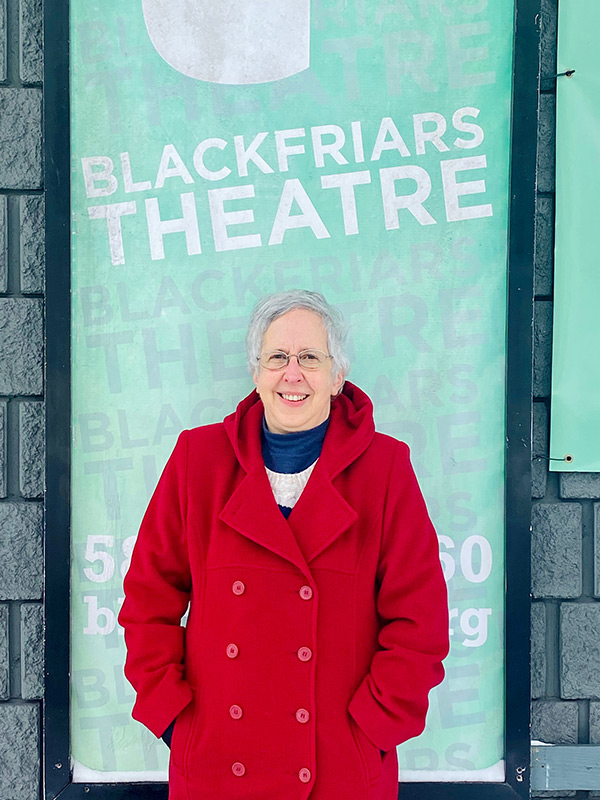Setting the “Pace” to Support Arts Organizations

When Laurel Pace was growing up in Ohio in the late 1960s, her suburban Cleveland community started to experience white flight. “For Sale signs were absolutely everywhere,” she recalls.
In response, neighborhood leaders organized meetings to discuss ways to promote racial understanding through a variety of grassroots initiatives. Laurel’s parents, Eugene and Chris Pace, attended the very first gathering when an idea for a community theater was suggested.
The East Cleveland Community Theater was formed a short time later. There was no building and no budget. Laurel’s parents, whose drama experience had been limited to a few courses and their church drama group, were surprised that they were identified in the official paperwork as the directors.
For several years the theater rented space to stage productions. The Paces wrote grant proposals to support the fledgling group, and when a former church that was being used as a community center came up for sale in 1979, the theater bought it.
“It was a maintenance nightmare,” Laurel recalls of the historic building that was built in 1896.
But her parents were not deterred and threw themselves into making it a success. To advance its mission of interracial understanding, the theater intentionally chose its actors without regard to their ethnicity or skin color. The performances were high quality, with several people moving on to other professional theaters in the area.
Her parents’ commitment to the theater and the goodwill it brought to the neighborhood is what has inspired a great deal of Laurel’s own philanthropy and her passion for small theaters.
“I know the struggles my parents went through — in their case a very old building. Water damage, flooded gymnasium, roof problems, those stuck with me,” says the manufacturing engineer who started her career at Eastman Kodak Co. and concluded it at ON Semiconductor (now closed). “I understand what a difference $10,000 can make.”
Her gifts to local arts and theater organizations tend to be focused on infrastructure. “I am not interested in having my name on a plaque. I want to make things better for performers and audiences,” says Laurel.
Blackfriars Theatre in downtown Rochester has been one beneficiary of her generosity. With a challenge grant, Laurel helped to raise money needed to replace the Main Street building’s 126 seats — and additional dollars, too.
“That effort resulted in an amazing tidal wave of support for the theater,” says Mary Tiballi Hoffman, Blackfriars’ development manager. Someone else stepped in to donate new carpet. “These improvements impact every single person who comes to our shows.”
Laurel regularly offers a year-end challenge, which raises two or three times what she contributes. She has helped purchase a new sound board to increase the microphone capacity so that the theater can have bigger shows with more actors. When a third employee was added to the staff a few years ago, Laurel provided funding to reorganize the office space and buy new computers. Her donations also have gone toward a new water fountain, projector improvements, and updates to the dressing rooms.
“She has an emotional connection to the work we are doing. Laurel has given us opportunities, not just support, to allow us to take steps forward as an organization,” says Hoffman.
Laurel first learned about the Community Foundation from reading a Memorial Art Gallery article that mentioned the Gouvernet Arts Fund. Then she met Suzanne Gouvernet at Niagara-on-the-Lake. “I didn’t realize what an icon she was in our community.”
Suzanne readily shared all the positives of having a charitable fund at the Foundation, convincing Laurel to open the Pace Family Fund in 2016.
Laurel has had several windfalls — an inheritance from an aunt and severance when her retirement coincided with the company closing — that she immediately put back into the community. In 2020, she distributed her severance in $10,000 increments to some of her favorite arts groups. “It was definitely a good time. Those organizations needed the money more than I did. Everybody was incredibly appreciative.”
Her approach to giving is pretty straightforward. She says she has enough money from her pension and soon, Social Security, to take care of groceries and to pay insurance premiums. With no children and only one sister, Laurel plans to leave the bulk of her estate to several local charities, and the Community Foundation will help carry out her wishes when the time comes.
“It’s wonderful for me that the Foundation can do that. I like the flexibility. I have changed the percentages once or twice. It’s all very clean and easy,” Laurel says.
While Laurel’s giving is predominantly in the arts, she has branched out, particularly during the pandemic. “It changed my perspective on giving. I was hesitant and asking myself, ‘Where is my donation going to do the most good?’ ”
She provided grants to United Way of Greater Rochester, the Salvation Army, and Open Door Mission to address specific areas of need. She also contributed to what were new initiatives — the Community Crisis Fund and the Foundation’s COVID Education and Racial Equity Growth funds.
Laurel will continue to make sure her favorite arts-related nonprofits have the financial backing they need and hopes “all of these organizations will keep going.”
Blackfriars Theatre could not have gotten through 2020 — and survived thus far — without Laurel’s generosity.
“It is incredible to have someone who understands what it’s like to run a scrappy little theater company,” Hoffman says.